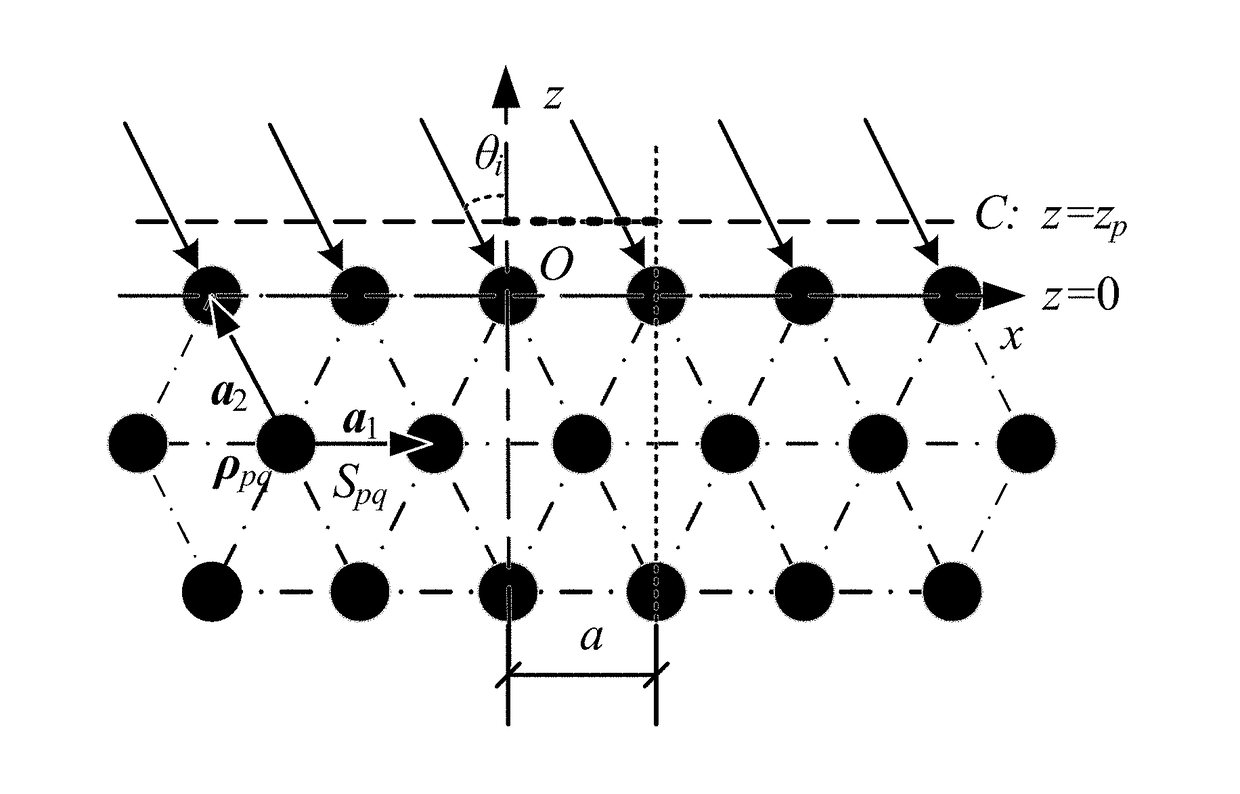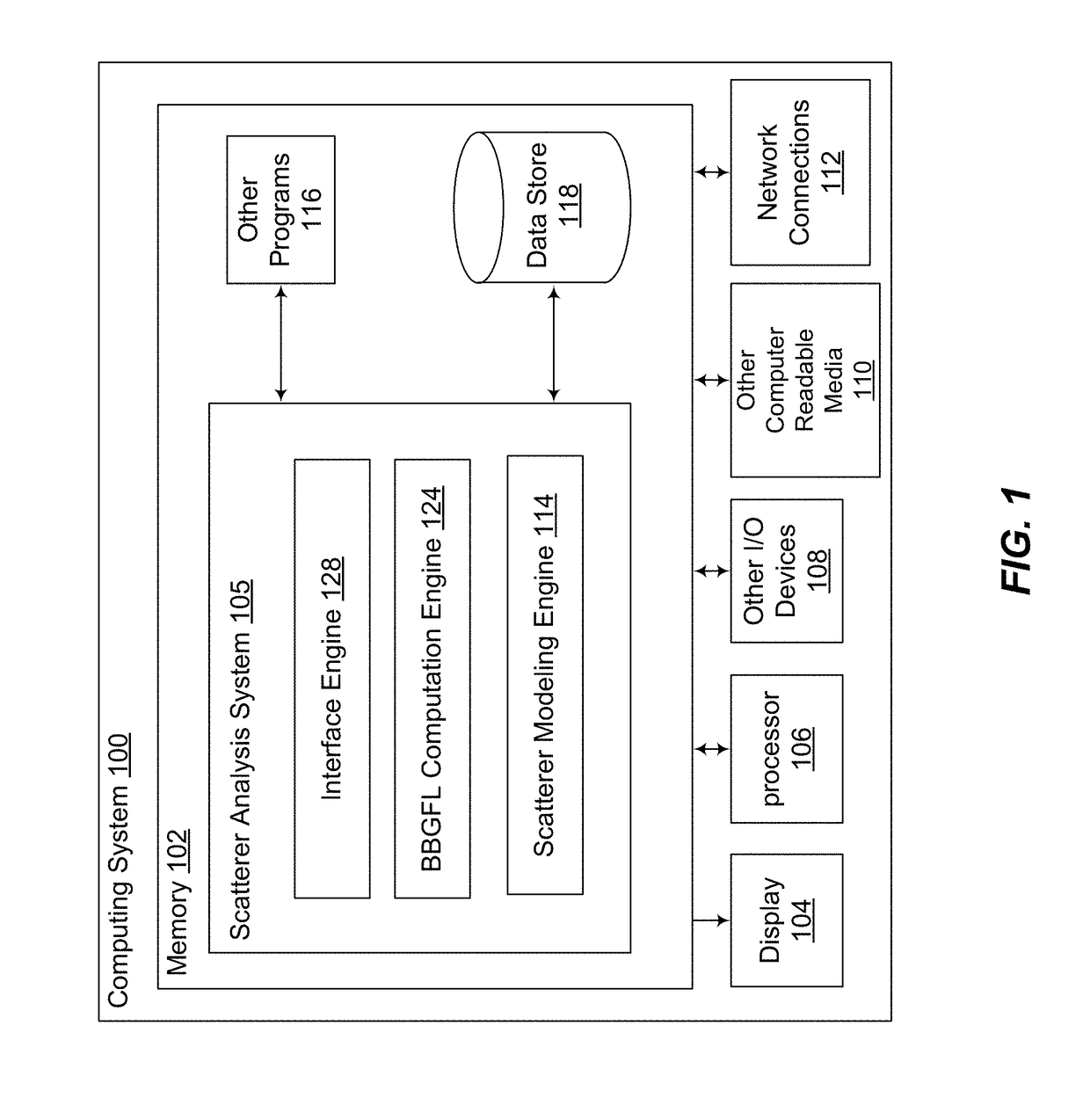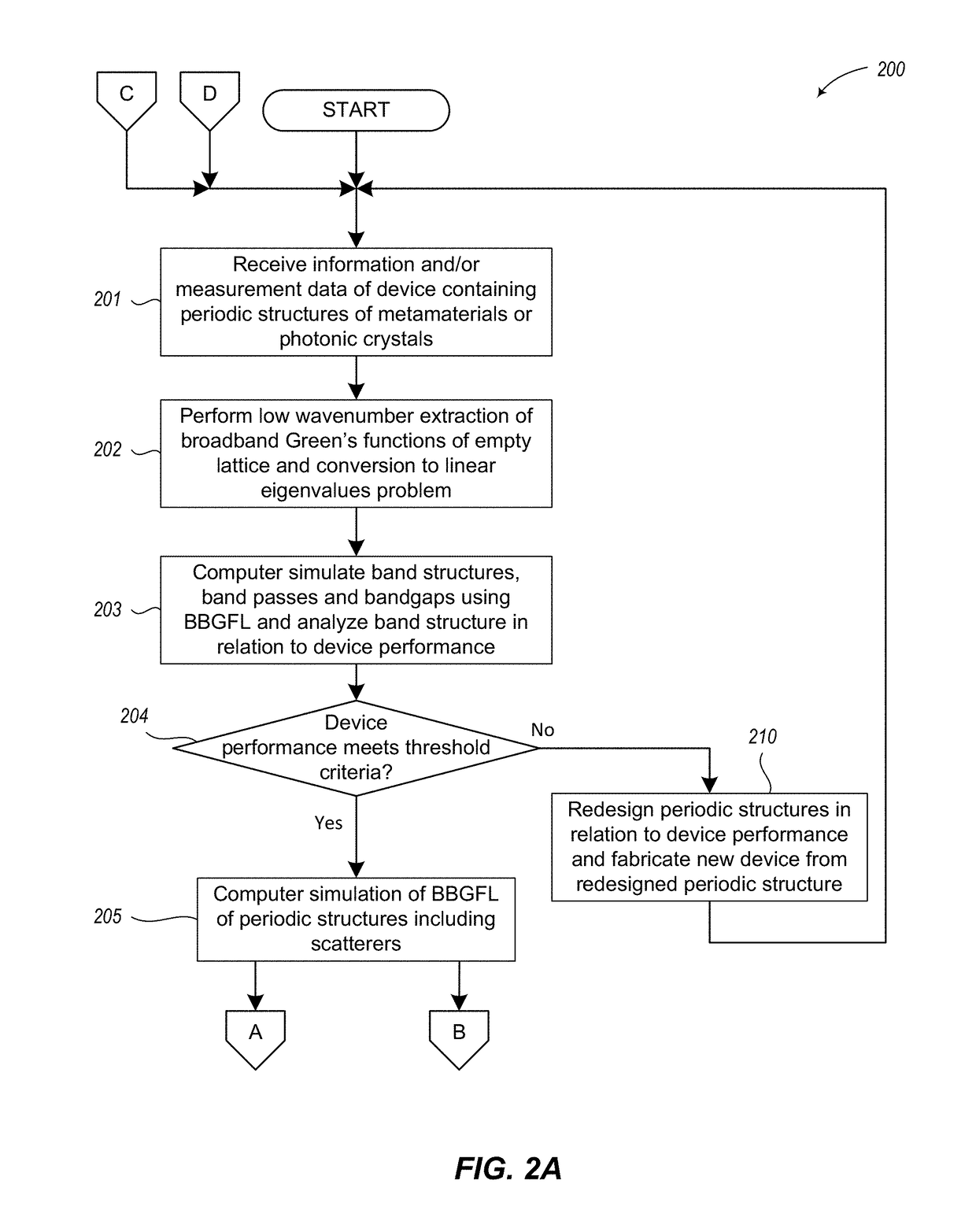Full wave simulations of photonic crystals and metamaterials using the broadband green's functions
a photonic crystal and metamaterial technology, applied in the field of full wave simulation of photonic crystals and metamaterials, can solve the problems of inability to meet the requirements of broadband analysis, inability to model metamaterials, inefficient and inaccurate electromagnetic simulation tools, etc., and achieve the effect of fast convergence of modal expansion and efficient acquisition
- Summary
- Abstract
- Description
- Claims
- Application Information
AI Technical Summary
Benefits of technology
Problems solved by technology
Method used
Image
Examples
case 1
[0146] b=0.2, ε=8.9ε0, a=1
[0147]Consider the case when the wave vector is
β1=0.1
β2=0.05
[0148]Table 1 is a comparison of band eigenvalues fN computed from BBGFL using different number of Floquet modes (Nmax, M) after low wavenumber extraction. The results are compared against the KKR results. Results are computed for ki=0.1b1+0.05b2. The 7-th mode 0.642 is shown to be a complementary band solution by testing the scattering field outside the PEC cylinder. The geometry parameters are as specified for case 1.
[0149]As shown Table 1 lists the fN for 10 eigenvalues. Three different Nmax are chosen to truncate the Floquet modes: (Nmax=3, M=49), (Nmax=5, M=121), (Nmax=20, M=1681). The KKR solutions are also listed. The results with (Nmax=3, M=49) agree with KKR to 2 significant figures. The results with (Nmax=5, M=121) agree with KKR to 3 significant figures. This shows the BBGFL method is efficient and accurate. The surface currents of several eigenvalues are illustrated in FIG. 16B. In FIG....
case 2
[0152] b=0.4, ε=8.9ε0, a=1
[0153]The area ratio of scatterers to background is πb2 / Ω0=58%. In Table 2, fN is listed for the first 10 eigenvalues with ki=0.1b1+0.05b2. The results with three different Nmax to truncate the Floquet modes are compared against the KKR solutions. The BBGFL solutions have both multi-band solutions and the complementary multi-band solutions. The results are in good agreement with that of KKR. The surface currents corresponding to 5 of the first 10 solutions are plotted in FIG. 16D. FIG. 16D shows surface currents of the band solutions: (e.g., 5:0.6085 means the normalized frequency of the fifth mode in ascending order is 0.6085). The 4th and 5th eigenvalues are band solutions, as indicated by “(1)” in the plot following the mode frequency. The rest 3 modes as indicated by “(0)” are that of complementary bands. Results are computed for ki=0.1b1+0.05b2. The geometry parameters are as specified for case 2. Results are computed with M ≈ 600.
[0154]In FIG. 16E, th...
PUM
 Login to View More
Login to View More Abstract
Description
Claims
Application Information
 Login to View More
Login to View More - R&D
- Intellectual Property
- Life Sciences
- Materials
- Tech Scout
- Unparalleled Data Quality
- Higher Quality Content
- 60% Fewer Hallucinations
Browse by: Latest US Patents, China's latest patents, Technical Efficacy Thesaurus, Application Domain, Technology Topic, Popular Technical Reports.
© 2025 PatSnap. All rights reserved.Legal|Privacy policy|Modern Slavery Act Transparency Statement|Sitemap|About US| Contact US: help@patsnap.com



